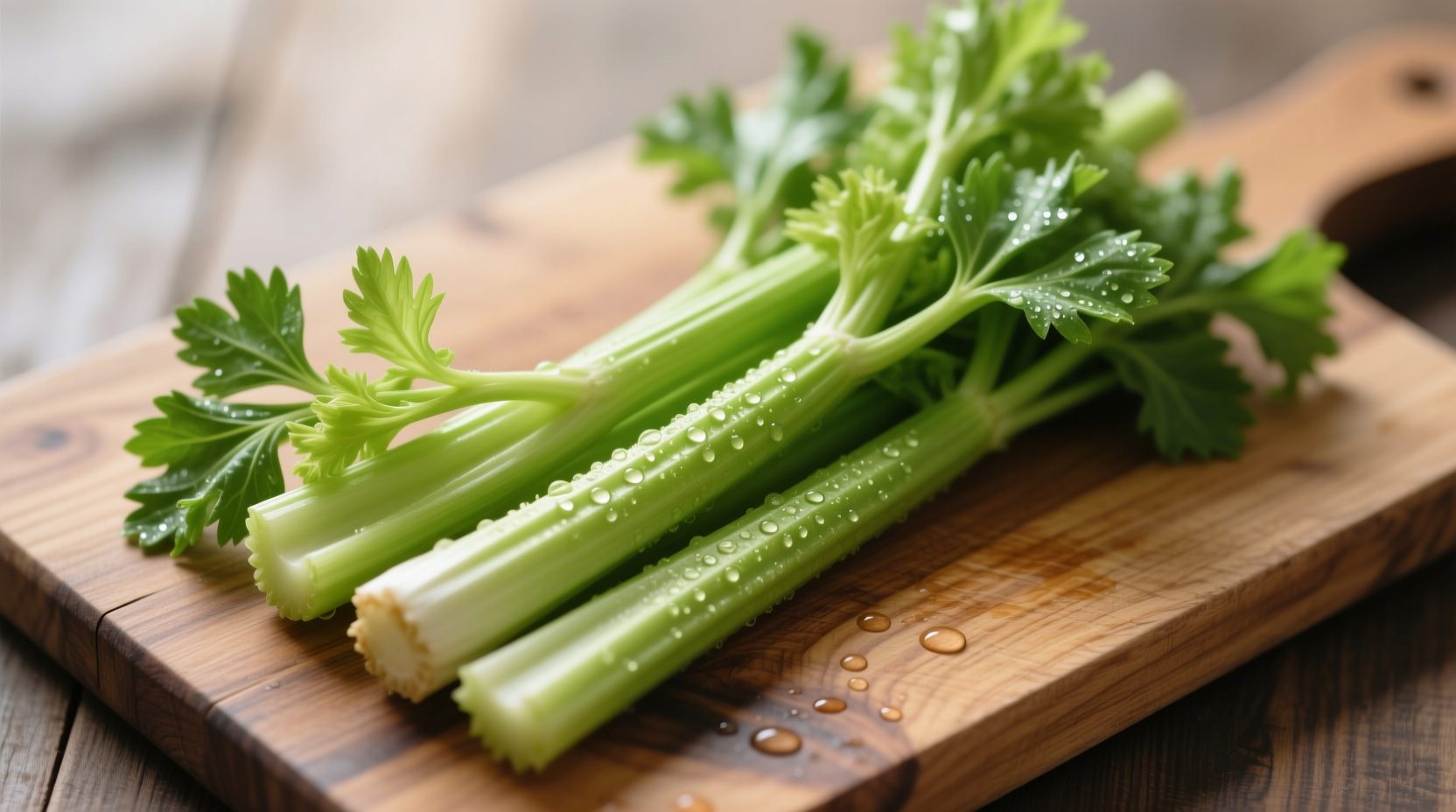When you're trying to boost your daily fiber intake, celery often gets overlooked despite its impressive nutritional profile. Many people assume this watery vegetable lacks significant nutritional value, but the truth about celery's fiber content might surprise you. Let's explore exactly how much fiber celery contains and why it deserves a regular spot in your diet.
Understanding Celery's Fiber Content
Celery isn't just water and crunch—it's a legitimate source of dietary fiber that contributes meaningfully to your daily nutritional goals. According to the USDA FoodData Central database, a standard serving of celery delivers:
| Celery Serving Size | Total Fiber | % Daily Value* |
|---|---|---|
| 1 medium stalk (40g) | 0.6g | 2% |
| 1 cup chopped (101g) | 1.6g | 6% |
| 2 cups chopped (202g) | 3.2g | 11% |
*Based on a 25g daily fiber recommendation for adults
While celery may not be the highest-fiber vegetable available, its combination of fiber types makes it nutritionally valuable. Celery contains both soluble fiber (which dissolves in water and helps regulate blood sugar) and insoluble fiber (which adds bulk to stool and supports regular digestion). This dual-fiber profile provides comprehensive digestive benefits that many single-fiber sources don't offer.

How Celery Fiber Compares to Other Vegetables
When evaluating whether celery has enough fiber to be worth including in your diet, context matters. Let's see how celery stacks up against other common vegetables:
| Vegetable (1 cup) | Total Fiber | Calories |
|---|---|---|
| Celery, chopped | 1.6g | 16 |
| Broccoli, chopped | 2.4g | 31 |
| Carrots, sliced | 3.6g | 50 |
| Spinach, cooked | 4.3g | 41 |
| Brussels sprouts | 4.0g | 56 |
What makes celery special isn't just its fiber content, but the exceptional fiber-to-calorie ratio. With only 16 calories per cup yet delivering 1.6g of fiber, celery offers more fiber per calorie than many higher-calorie vegetables. This makes it particularly valuable for those managing weight while trying to increase fiber intake.
Practical Ways to Maximize Celery's Fiber Benefits
To get the most fiber from celery, how you prepare and consume it matters significantly. Many people unknowingly reduce celery's fiber content through improper preparation:
- Eat it raw - Cooking celery can break down some of its fiber structure, so raw consumption preserves maximum fiber content
- Include the leaves - Celery leaves contain additional fiber and nutrients often discarded
- Pair with other high-fiber foods - Combine celery with hummus, nut butters, or in vegetable salads to create fiber-rich meals
- Don't peel it - The outer strings contain valuable insoluble fiber, so peeling reduces nutritional value
For those specifically tracking fiber intake, incorporating two cups of chopped celery into your daily meals contributes over 10% of the recommended daily fiber—without adding significant calories. This makes celery an excellent choice for snacks, salad bases, or as a crunchy addition to soups and stews.
Addressing Common Misconceptions About Celery and Fiber
Several myths persist about celery's nutritional value that deserve clarification:
Myth: "Celery has negative calories"
Reality: While celery is extremely low in calories (about 16 per cup), the thermic effect of digesting it doesn't actually create a calorie deficit. However, its high water and fiber content do promote satiety, making it valuable for weight management.
Myth: "Celery doesn't have enough fiber to matter"
Reality: While celery isn't the highest-fiber vegetable, its combination of soluble and insoluble fiber in such a low-calorie package makes it nutritionally valuable. As part of a varied diet, celery contributes meaningfully to daily fiber goals.
Myth: "The fiber in celery is mostly in the strings, so peeling improves it"
Reality: Those strings contain valuable insoluble fiber. Peeling actually reduces celery's fiber content and nutritional value.
When Celery Fiber Might Not Meet Your Needs
While celery provides beneficial fiber, it's important to understand its limitations in certain contexts:
- For significant fiber boosts: If you need to dramatically increase fiber intake (such as after certain medical procedures), celery alone won't provide sufficient fiber density
- For specific digestive conditions: People with IBS or other digestive sensitivities may need to monitor celery consumption as part of a low-FODMAP diet
- For targeted health goals: If you're specifically seeking soluble fiber for cholesterol management, foods like oats or beans would be more concentrated sources
The key is understanding that celery's fiber works best as part of a diverse plant-based diet rather than as a standalone solution. Combining celery with other high-fiber vegetables, fruits, legumes, and whole grains creates a comprehensive fiber profile that supports optimal health.
Conclusion: The Fiber Value of Celery in Perspective
Celery absolutely contains dietary fiber—approximately 1.6 grams per cup—and offers both soluble and insoluble varieties that support different aspects of digestive health. While it may not be the highest-fiber vegetable available, its exceptional fiber-to-calorie ratio makes it a valuable component of a balanced diet, particularly for those managing weight while trying to increase fiber intake.
When incorporated thoughtfully into meals—eaten raw with leaves intact and paired with other fiber-rich foods—celery contributes meaningfully to your daily fiber goals. Understanding both the benefits and limitations of celery's fiber content allows you to make informed decisions about how this crunchy vegetable fits into your overall nutrition strategy.











 浙公网安备
33010002000092号
浙公网安备
33010002000092号 浙B2-20120091-4
浙B2-20120091-4